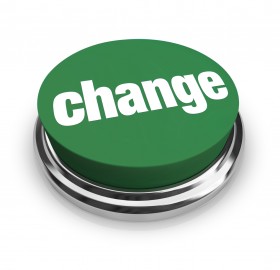
Yes! – It can definitely be an obstacle.
Many corporations invest a lot of time and effort into complex processes describing how their business should be carried out. Many have also brought these processes to certification according to ISO or other schemes. Depending on how processes are setup they can either pose as a gigantic hurdle to overcome or they can be used during the transition.
There are numerous examples where corporations develop complex standardized routines based on “huge” amounts of standard word-documents. Sometimes they state that “the system” should have a yearly update, and include routines for that update into the system. Sometimes they also include a “long arrow” from the very end of the process back to the beginning and call that “experience feedback loop”.
The likelihood that such a system, at any given time, can secure the delivery of a service or a product in a complex rapidly changing environment is not very high.
“As a group of tourists with guide moves slower than the people on the street, every organization moves more slowly than the society it lives in.”
Troed Troedsson
The problem
The transition into a sustainable world needs a lot of basic re-thinking and re-engineering of the way we carry out our business. In most cases small adjustments to an existing model will not be enough. We need transformational change!

Existing, developed, documented, quality certified and often very complex set of standards and routines represent a huge, already made, investment. To depreciate this investment and immediately start re-engineering a “new way of working” takes a lot of courage and decisiveness, especially in today’s short-term, quarterly financial reality.
But still, it is quite amazing how decisions on huge investments and business ventures sometimes can be made on vague background data and unsecure information while decisions on the very basics and the future of the business itself may be subject to procrastination.
Prone to change
Why is it that corporations so quickly embrace “E-invoices”, “E-commerce”, and Electronic processes for invoices, but are so reluctant to create database-systems for routines and other processes? Systems that actually simplify and assist employees in doing things right rather than old-fashioned document-based systems that creates extra work and extra handling.

Compare document-based systems with today’s IT-revolution. On a smartphone or a tablet you can do amazing things, different applications can help you to book hotels, play music, do your banking-business, look at drawings, deliver e-mails, there is almost no end to what you can do. And, whenever the OS on the device is updated most applications are also updated. Whenever a bug is detected or a new feature is added the application is updated immediately, no waiting for the yearly updates – on everyone’s device, regardless if you are at home, at work, on vacation or on the other side of the globe. And it can even be automatically updated when you are sleeping. Feedback systems are also often integrated and automatised in the applications.
Change-orders
In most standard processes and systems there are routines on how to handle changes, “Change-Orders” – only problem is that, normally, it cannot handle a “change of system”, just changes within the system.
“You never change things by fighting the existing reality. To change something, build a new model that makes the existing model obsolete.”
Buckminster Fuller
Why we need to live in “the Present”!
Whenever a “bubble bursts” there are winners and there are losers – just look at the early “IT-Bubble” the “Finance-Bubble” (-s) and the “Real-Estate-Bubble” (-s)
It seems as if corporations that stick to rigid business-plans or rigid standardised routines for just “a little to long” very quickly end up with problems or fall behind and have to struggle just to “keep up”. A once successful and “proven” business-model doesn’t come with lifetime Warranty – especially not in today’s fast-changing and Globalized reality.
If business intelligence is executed in a windowless room in the basement it is very likely that our quick moving society will pass by without even being noticed….
![]() “Kodak began to struggle financially in the late 1990s as a result of the decline in sales of photographic film and its slowness in transitioning to digital photography, despite having invented the core technology used in current digital cameras….
“Kodak began to struggle financially in the late 1990s as a result of the decline in sales of photographic film and its slowness in transitioning to digital photography, despite having invented the core technology used in current digital cameras….
In January 2012, Kodak filed for Chapter 11 bankruptcy protection…” (…to be continued)
![]() “The Swedish Corporation Facit, once a global corporation with subsidiaries in more than 140 countries, grew rapidly on its success with mechanical office machines, typewriters, calculators etc.
“The Swedish Corporation Facit, once a global corporation with subsidiaries in more than 140 countries, grew rapidly on its success with mechanical office machines, typewriters, calculators etc.
In 1970 their revenue had grown with 500% in only 13 years and they were at their “peak” – In 1972 Facit was at the edge of bankruptcy and some years later it was liquidated.
…and now the “Fossil-Fuel/Infinite Growth/Consumerism-Bubble” is about to burst…
Reality is not waiting for “yearly updates”, for complex routines to be re-developed and re-written or for corporations to adapt – Reality is happening Now – whether we like it or not!